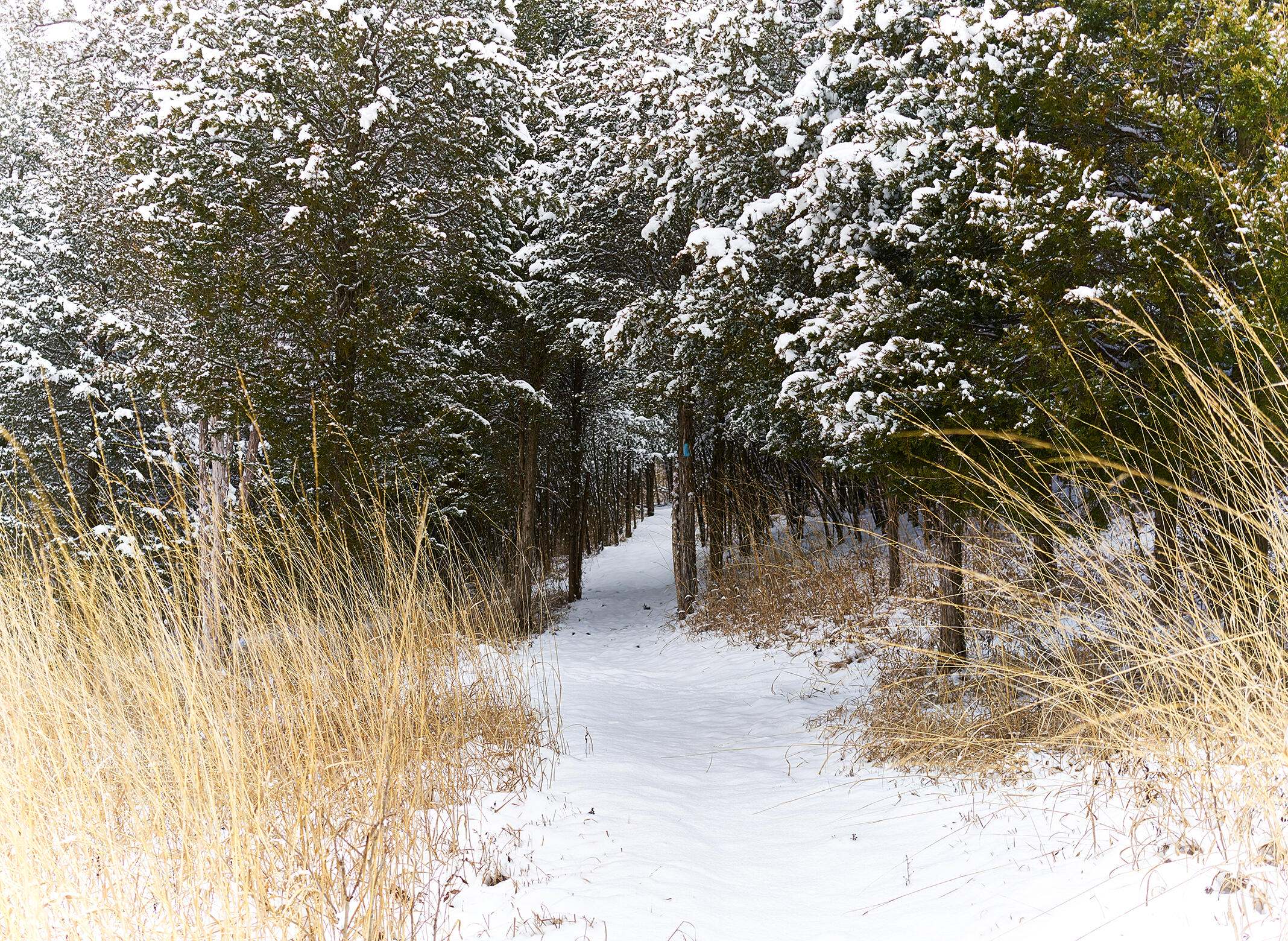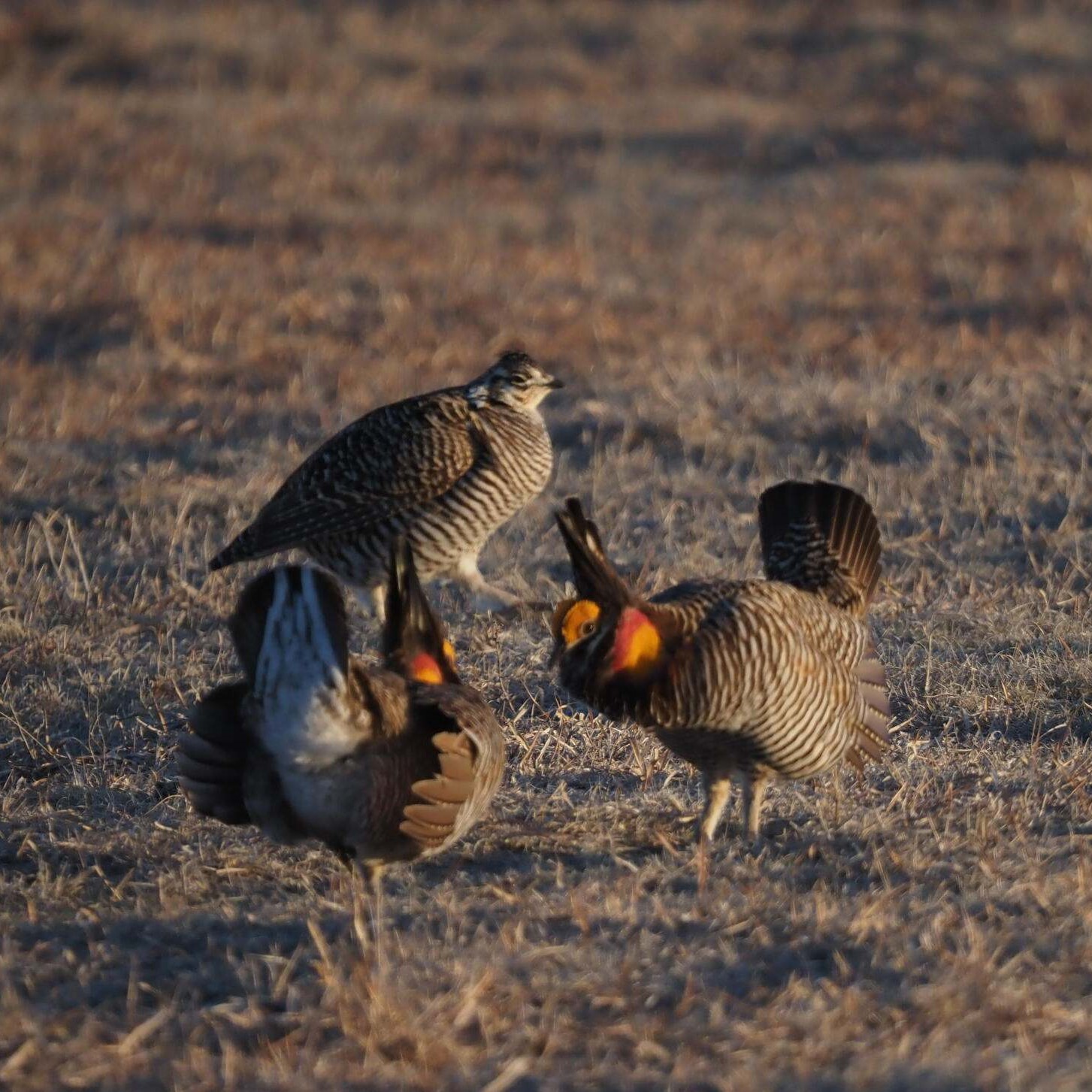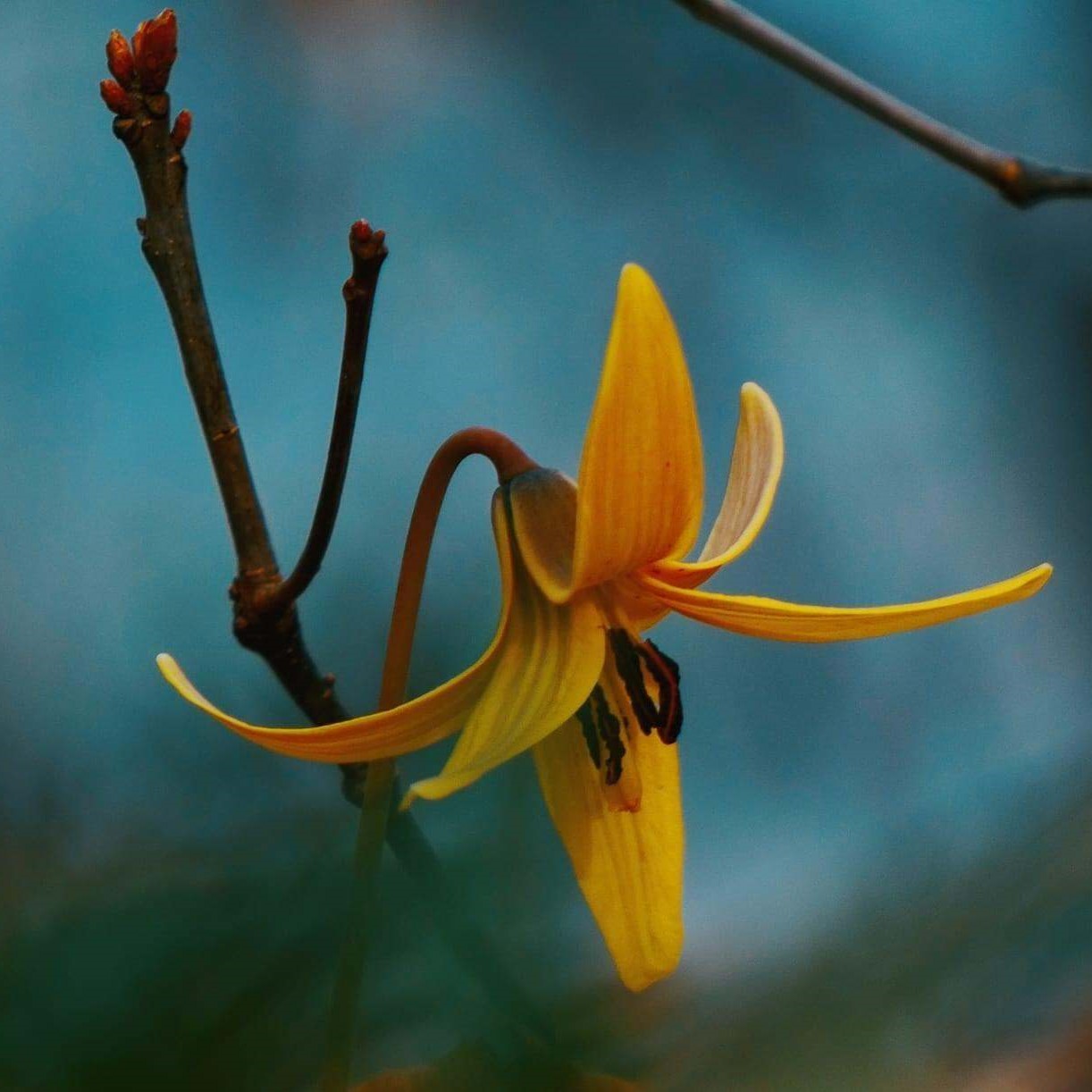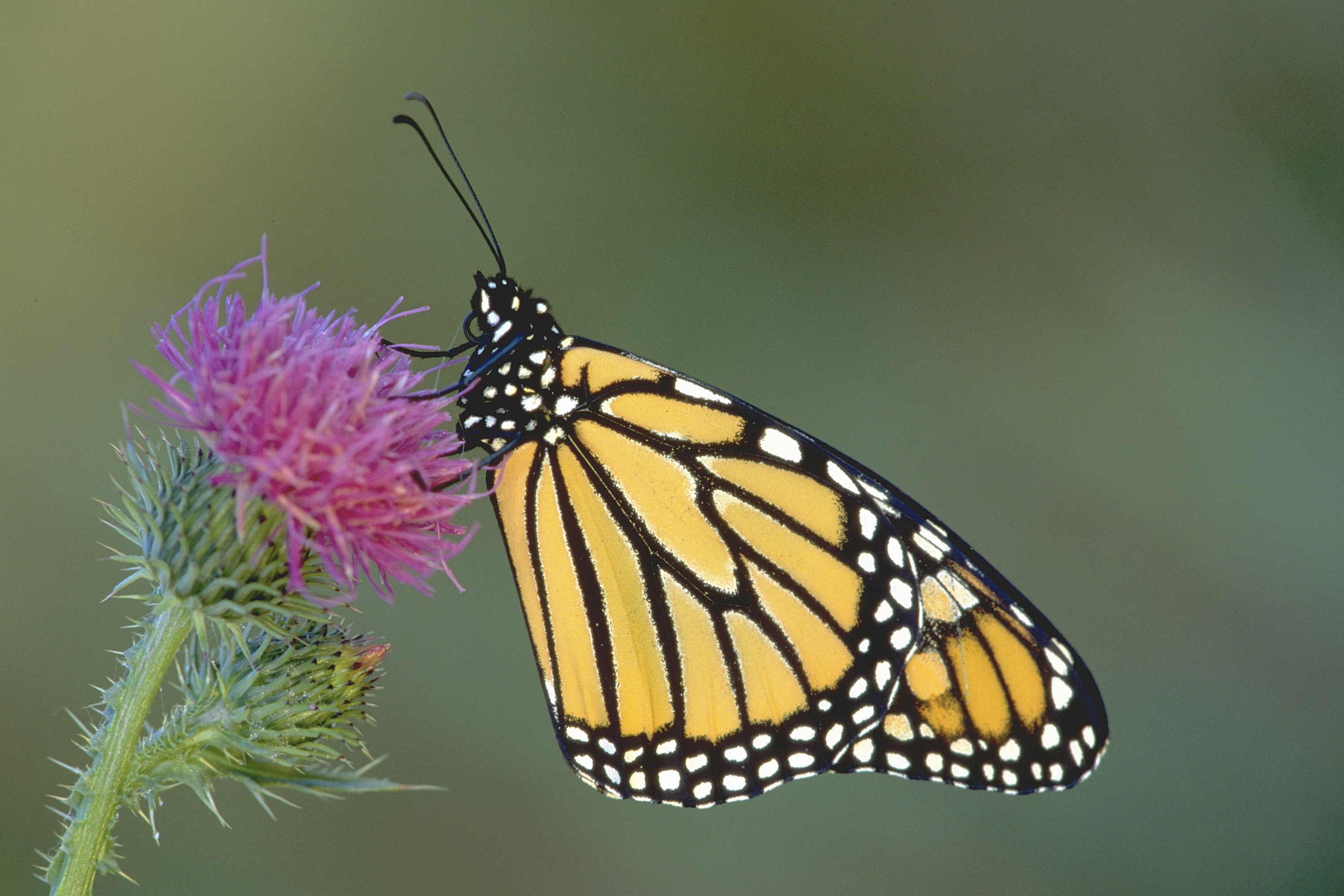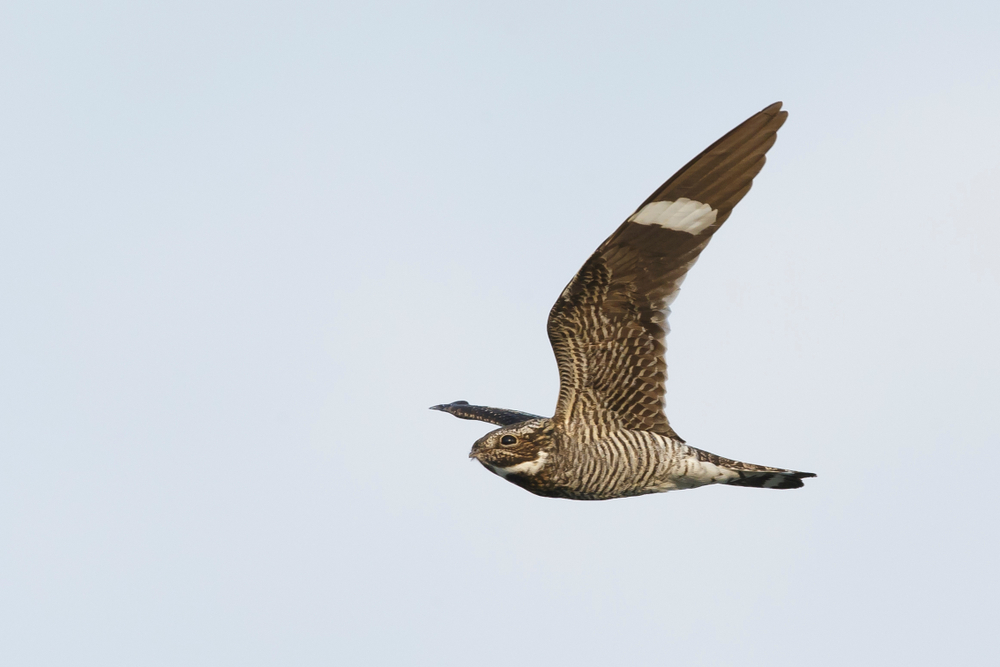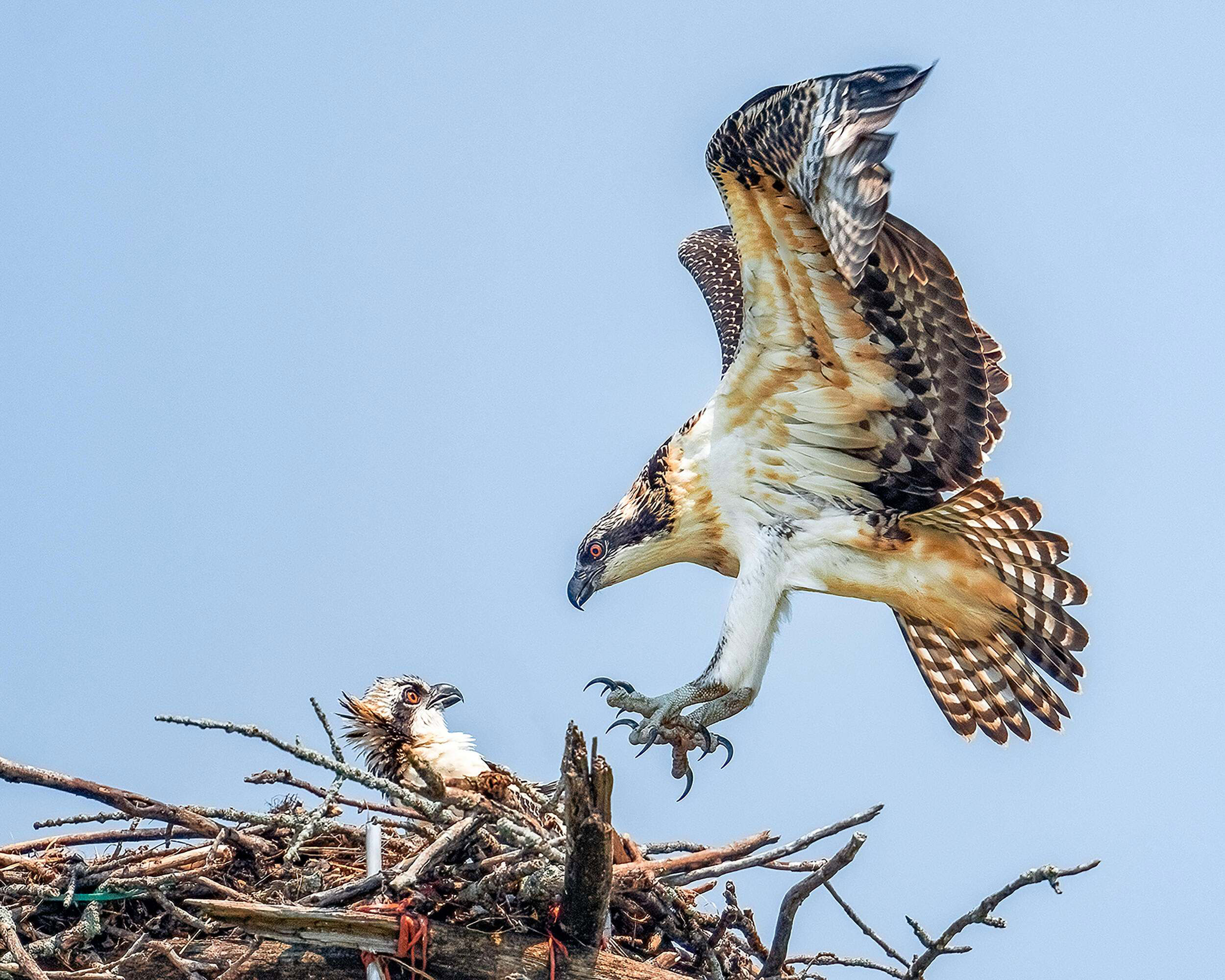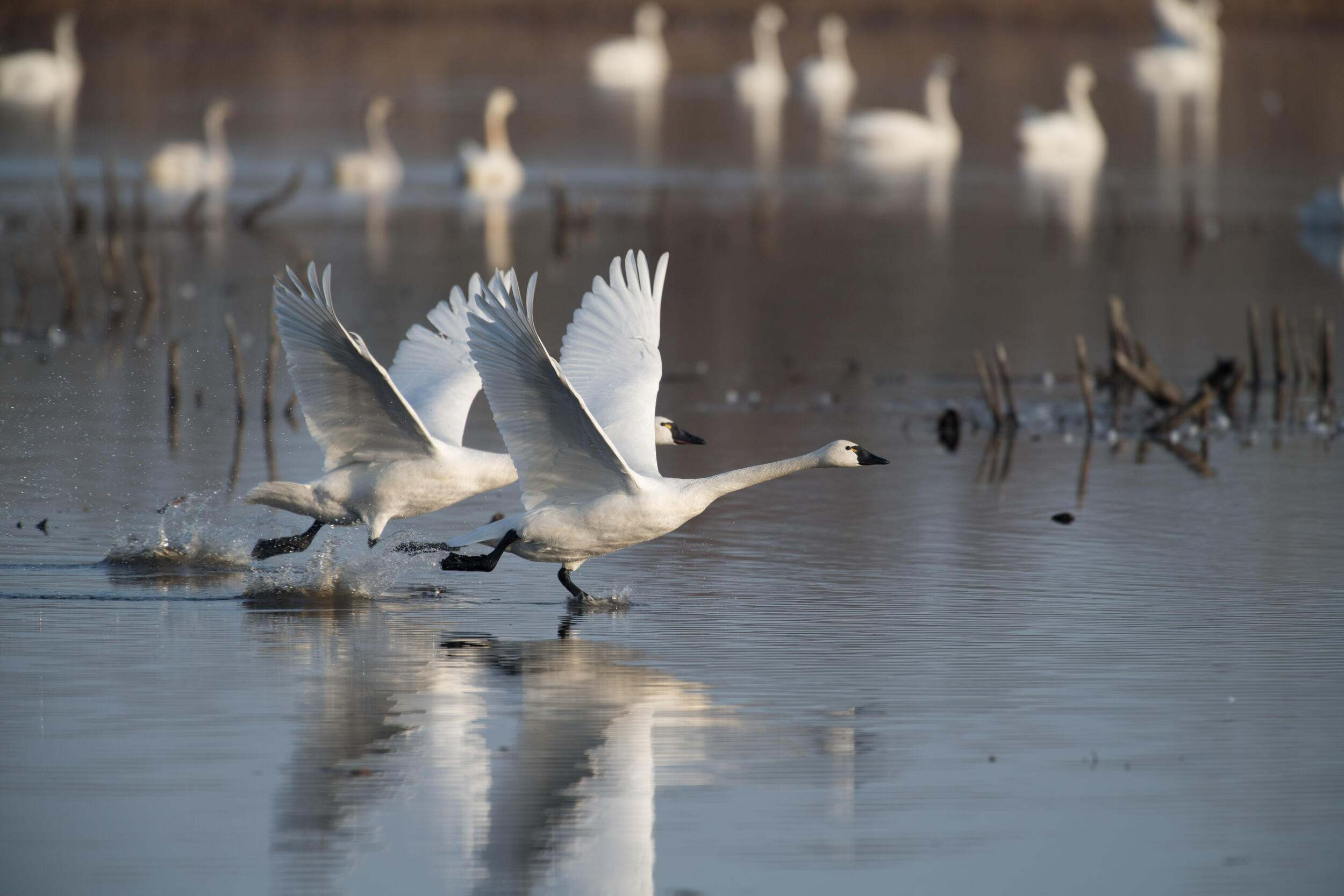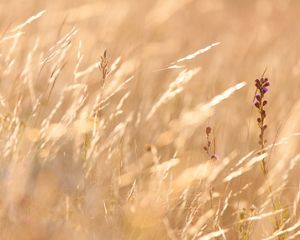What’s in this Season?
Minnesota’s ever-changing seasons serve up immeasurable discoveries in nature. Explore what’s happening in nature this season.

Winter

Winter in Minnesota is cold and snowy, but that should not keep you from exploring the outdoors! The trails are quiet and chances are, you may be the only one braving the elements. Embrace the solitude and soak in the mental health benefits the snowy forests and icy lakes have to offer. Bundle up and grab your snowshoes. There is so much going on in nature even on the chilliest days.
Birds
Winter is the best time for birding because there are no leaves on the trees. It makes spotting birds much easier! Although many birds flee Minnesota during the cold winter months, we have some year-round resident birds that you can surely spot around the state. In some winters, birds that are uncommon in the state arrive unpredictably in large numbers – a surprising movement called an irruption. Feeders that normally attract only the usual chickadees, juncos and blue jays suddenly are visited by colorful yellow and black evening grosbeaks, purple finches, redpolls, pine siskins or pine grosbeaks. These winter finches are hard to overlook, although their visits may be brief and sporadic—they are wanderers seeking seeds to sustain them through the winter. A good place to look for winter birds is Sax-Zim Bog, 300 square-miles of ideal habitat crisscrossed by county roads approximately 35 miles north of Duluth near the town of Cotton.
Winter Birds
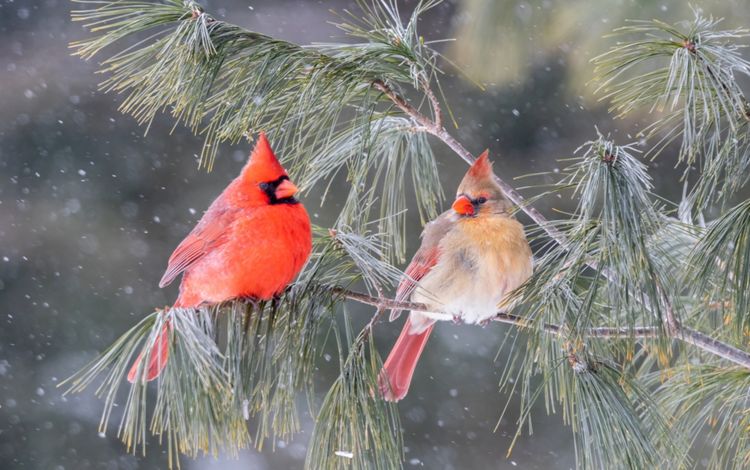
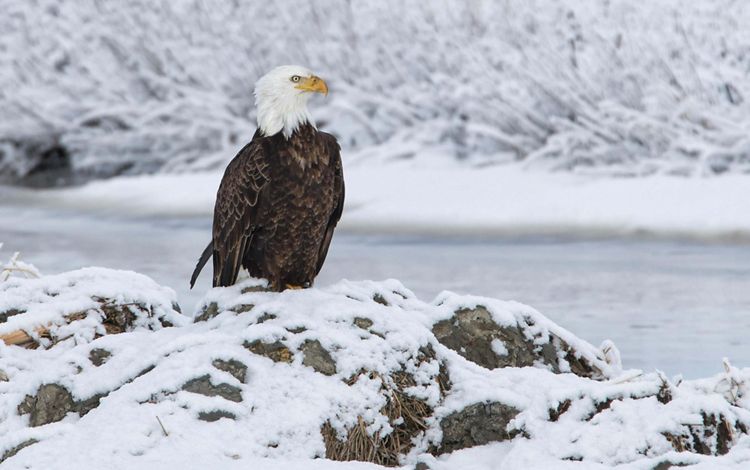
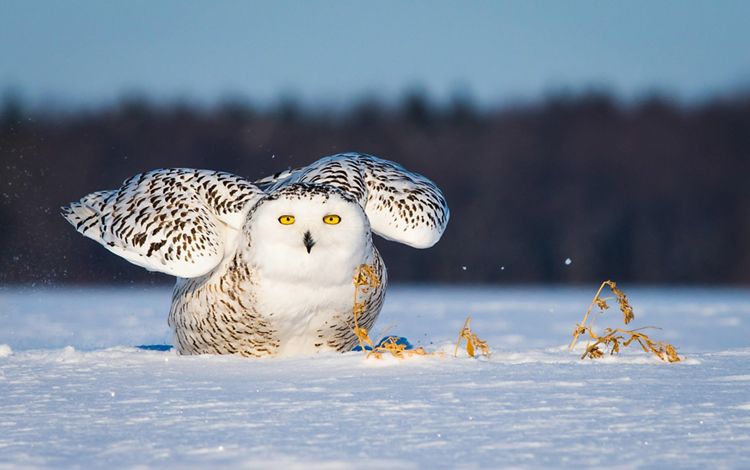

Wildlife
A snow-covered landscape makes Minnesota optimal for spotting wildlife in the winter months too. And soft snow holds evidence of wildlife movements for observers who are willing to look for it! Keep an eye out for the tracks of deer, fox and even coyotes.
If you have especially keen eyes, you may spot some critters that would rather not be seen. The fur coats of snowshoe hare, white jackrabbits and weasels all turn white to blend in with the snow in the winter months!
Wildlife Detective
Winter’s snows provide the perfect chance to flex and grow your wildlife tracking skills. From the common hoofprints of white-tailed deer to the distinct paw prints of coyotes, you never know whose tracks you’ll spot in the snow throughout TNC's preserves.


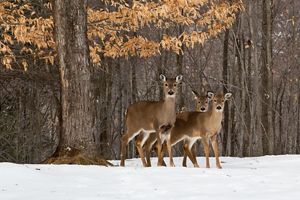

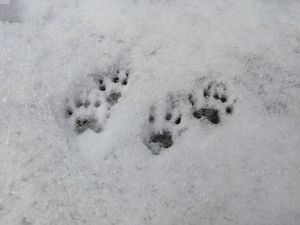

Coyote Pawprint: Coyote pawprints are a common sight in the snow. © Charles Larry

Coyote: Coyotes are present in many Illinois counties. © Lisa Bourgeault /TNC Photo Contest 2019

White-tailed Deer: White-tailed deer can be spotted across the state. © Kent Mason

Red Fox Tracks: Winter is an ideal time to practice identifying wildlife tracks thanks to how well snow can hold prints. © James Day/TNC Photo Contest 2022

Racoon Tracks: Snowfall makes for excellent opportunities to practice your animal track ID skills! © Lily Mullock/TNC
Places to visit
There is no shortage of places to experience the natural world in a Minnesota winter, but here are some of our recommendations.
-
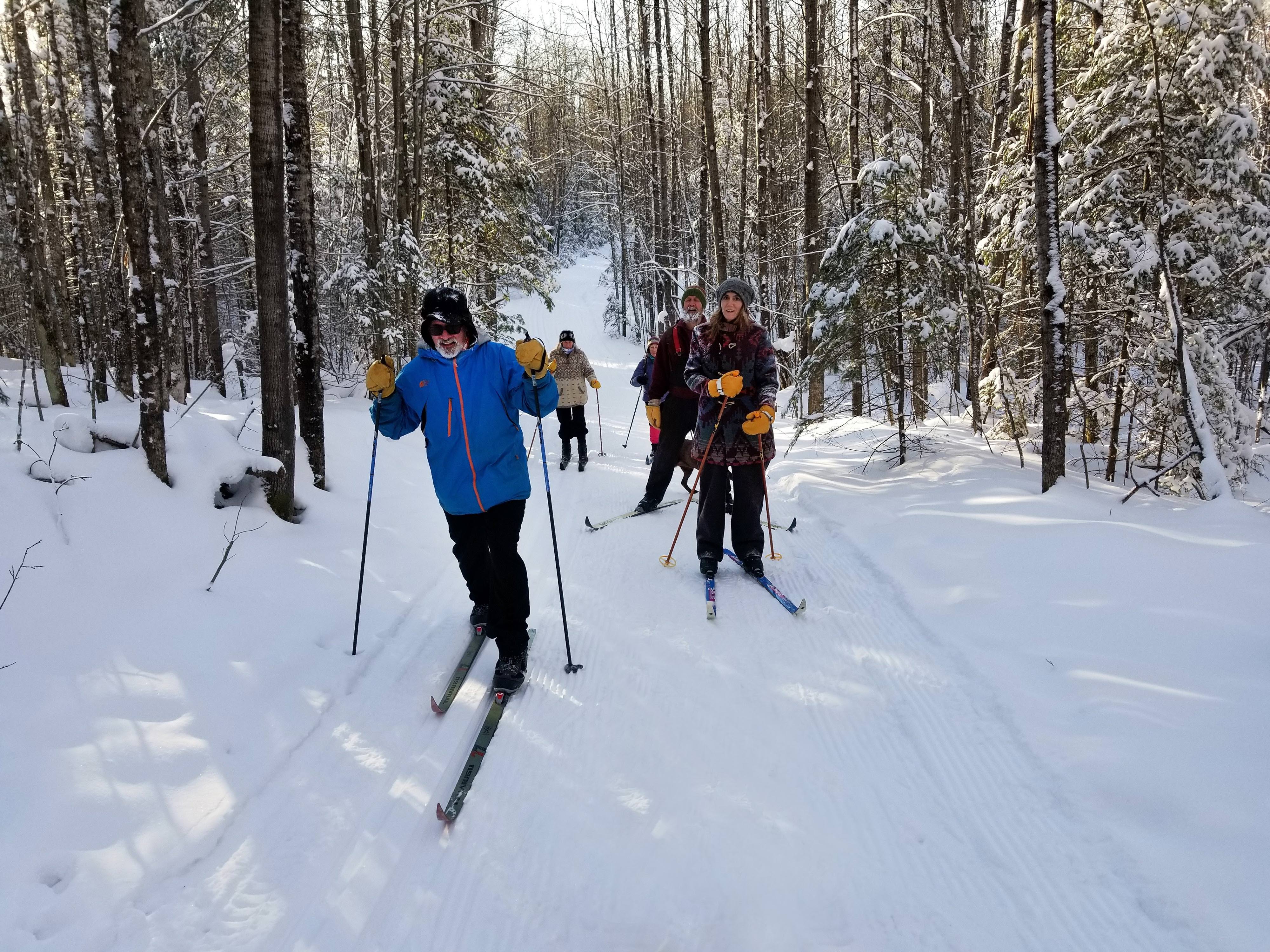
Paul Bunyan Savanna
Explore the rare jack pine savanna in the heart of Brainerd. Keep an eye out for birds and bring your cross-country skis! A local ski club maintains a ski trail through the preserve. Learn more
-
Elm Creek Park Reserve
This park in Maple Grove has tons of hiking trails ready for you to explore, plus several miles of cross-country ski trails and downhill skiing! Learn more
-
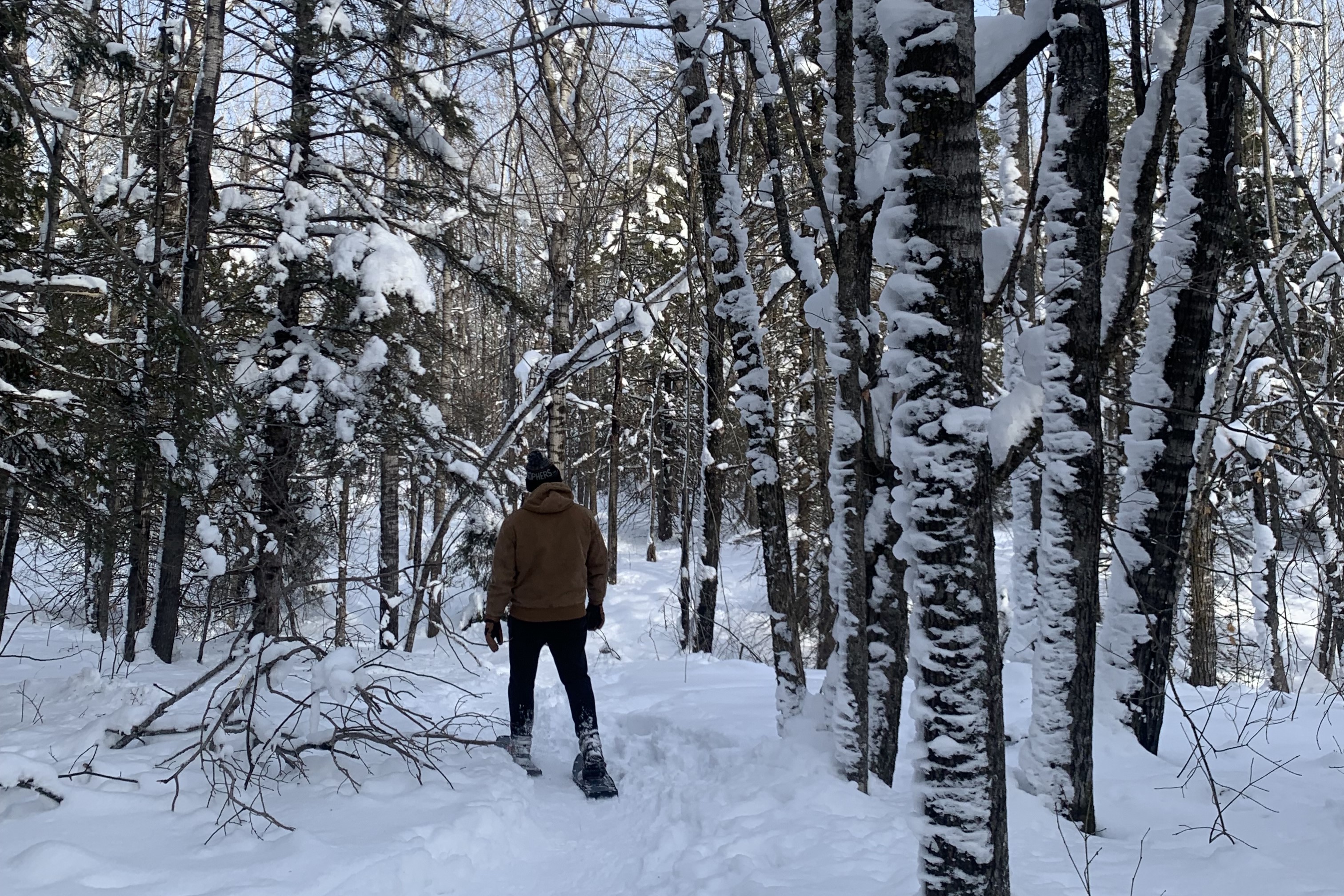
Jay Cooke State Park
Rent some snowshoes and explore this state park located just south of Duluth. The St. Louis River looks incredibly ethereal when its partially frozen! Learn more

Need More Nature?
Sign up for our monthly e-newsletter and get more of the news you want.
Spring

The signs of spring are always welcome after a long Minnesota winter. From early spring flowers soaking up precious sunlight to critters frantically seeking a mate, spring is a time for beauty and renewal. Enjoy the trickling waters of a slowly thawing river or lace up your boots for a tromp along a muddy trail. Take time to observe what’s around you—hints of spring will appear before the snow has even melted.
First Blooms
Woodland wildflowers must be early risers. They peep out of the decaying leaf litter before the trees above them have a chance to shoot out their sun-blocking leaves.
Few flowers that take root in the forest bloom earlier than the aptly named snow trillium. Spring’s large and showy trilliums are familiar wildflowers, but snow trillium is often overlooked both because it blooms so early and because it is rare. It is a species of special concern in Minnesota. It’s also the state’s smallest trillium—the flowers may be only an inch across.
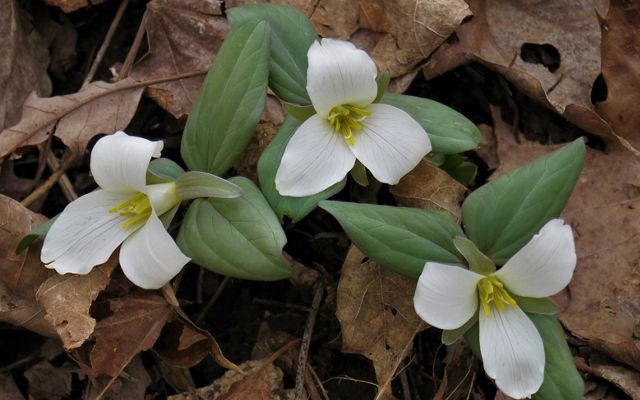
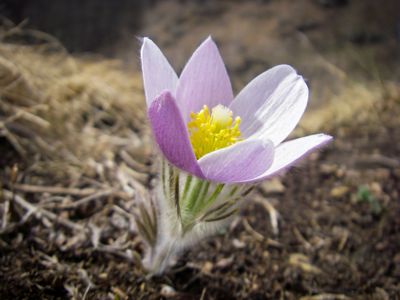
On the prairie, the pasque flower is one of the first to bloom. You may even see it blooming out of the melting snow. Pasque flowers thrive on prairies with sandy soils, like River Terrance Prairie SNA and Agassiz Dunes SNA. Nature writer Aldo Leopold wrote in A Sand County Almanac, “The chance to find a pasque flower is a right as inalienable as free speech.” Find a pasque flower and know unquestionably that spring has arrived on the prairie.
Spring Ephemerals
These early-season flowers bloom for just a short few weeks or even days. Then they disappear, remaining dormant until the next spring.






Trout lily at Sally Brown Nature Preserve: A yellow trout lily. © Oliver Starks

Spring Ephemeral: Dutchman's breeches in bloom. © Amy Couch/TNC

Bloodroot: Bloodroot, Sanguinaria Canadensis, in Nachusa Grasslands Preserve, Illinois. © Charles Larry © Charles Larry

Round lobed hepatica: Round lobed hepatica is a spring ephemeral flower. © Sage Ross

Bloom: Wood anemone blooms in the early spring. © Oliver Starks
Flying in Love
Spring is the season to witness incredible courtship displays as birds across Minnesota pursue mates.
Bald eagles perform spectacular aerial displays: circling high in the sky, then locking talons and tumbling downward, separating only moments before they would crash. Courtship flights occasionally happen as late as March, but many Minnesota eagles nest early and are incubating eggs by mid-February. Eggs hatch after 35 days and the young typically stay in the nest for another 8 to 14 weeks.
In April Minnesota’s tallgrass prairies host an impressive display of courting birds at the booming grounds of greater prairie chickens. Male prairie chickens compete for the attention of hens by performing a “dance” that includes stamping their feet, fanning their tails, hooting, gurgling and inflating throat pouches to create an odd booming call.


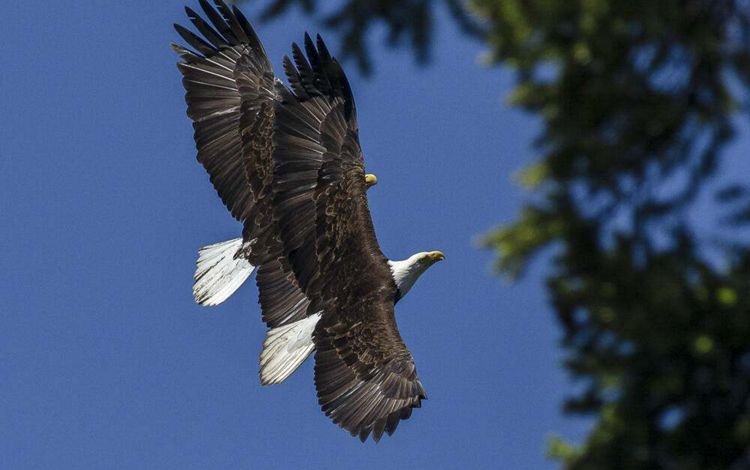
The American woodcock, a squat shorebird with long bills and stubby legs, can be heard courting in the forest. Listen at dusk for the male woodcock’s nasal peent call repeated every few seconds until the bird launches into an aerial display, easily recognized by its twittering wing sounds as it spirals upward. While the bird is airborne, move quickly to where you heard its peent calls, then sit quietly. You may be rewarded by the displaying woodcock swooping down to within a few feet of you to begin again its peenting calls. Stay very still and enjoy the show.
Places to Visit
-
Bluestem Prairie
Greater prairie chickens regularly mate in the mornings on this preserve. And if you visit at the right time, you may spot a blooming pasque flower! Explore
-
Eloise Butler Wildflower Garden
You are sure to see something beautiful blooming at this garden in Theodore Wirth Park in Minneapolis. Explore.
-
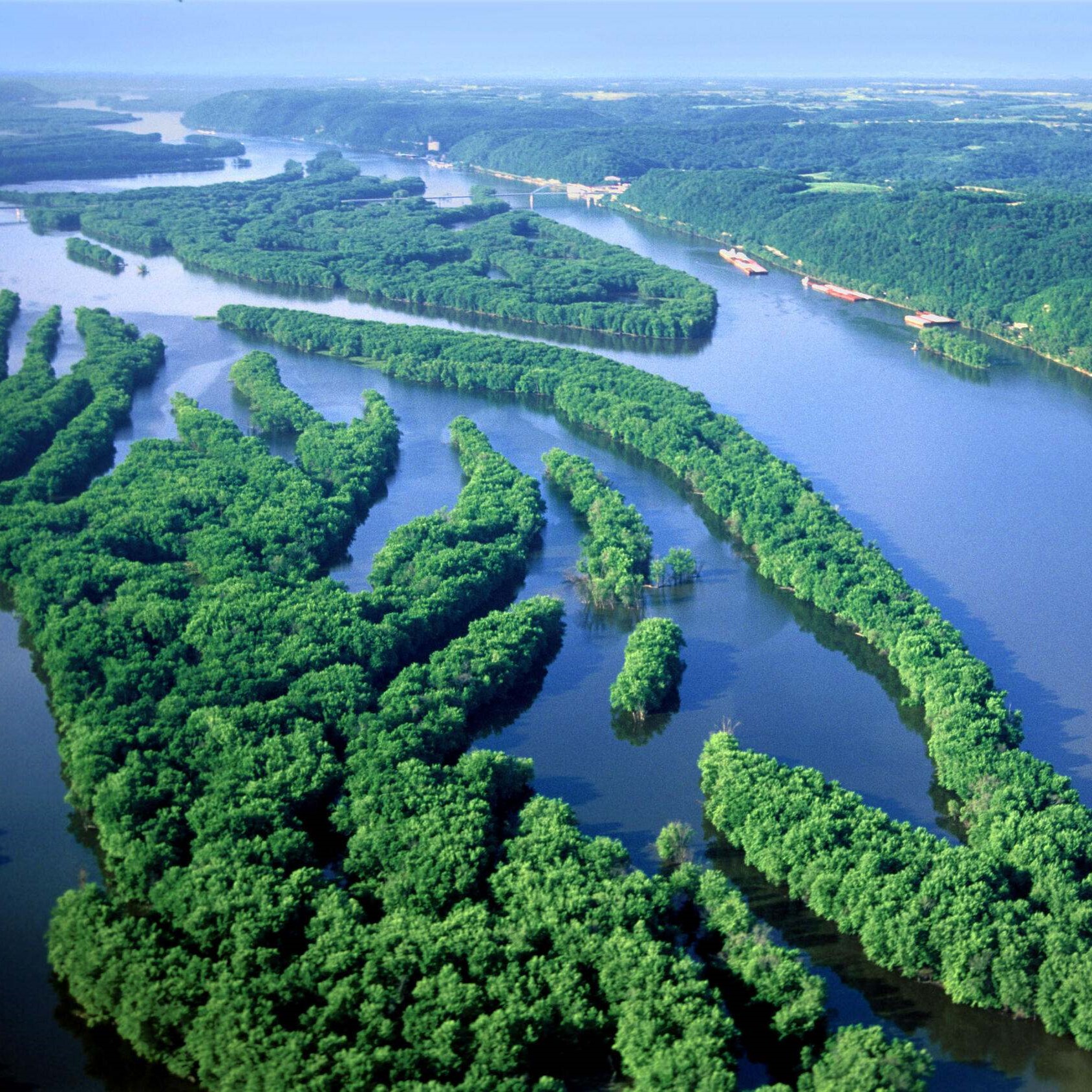
Read’s Landing
Located at the confluence of the Mississippi and Chippewa rivers near Wabasha, this floodplain forest is one of the best places to watch bald eagles in the Midwest. Explore
Summer

Summer: it’s what makes the Minnesota winters worth it.
Throughout the season, the state is abloom with wildflowers. Every few weeks, a new suite of plants is opening delicate petals to the bees and butterflies seeking out nectar.
The staggered blooms are key for supplying pollinators with nutrition throughout the entire summer. In June, lady’s slippers and pitcher plants peek up in wetlands. In July, coneflowers and milkweed flowers begin to bloom across the prairie. In August, asters, gentian and blazing star pop open their purple blossoms.
Lady’s slippers
You are likely familiar with the showy lady’s slipper, our state flower. But there are other orchid species blooming in prairies, wetlands and woodlands around the state. The best time to find these unique flowers is in June.

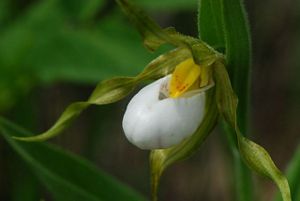
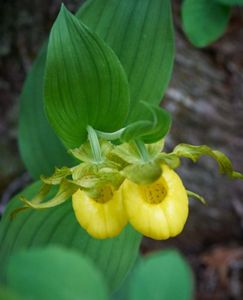


Showy lady's slipper: The showy lady’s slipper is Minnesota’s state flower. It’s a pink and white beauty often found in wetlands. © Kent Mason

Small white lady's slipper: This lovely flower is found in wet prairies in southern and western Minnesota and is a species of special concern in the state. Minnesota remains a stronghold of the remaining © Joshua Mayer

Yellow Lady's Slipper: Find this yellow blossom in the bogs of northern Minnesota. © TJ Vissing

Stemless lady's slipper: The stemless lady slipper features an elongated flower stalk and can be found in the forests of northern Minnesota. © Steve S. Meyer
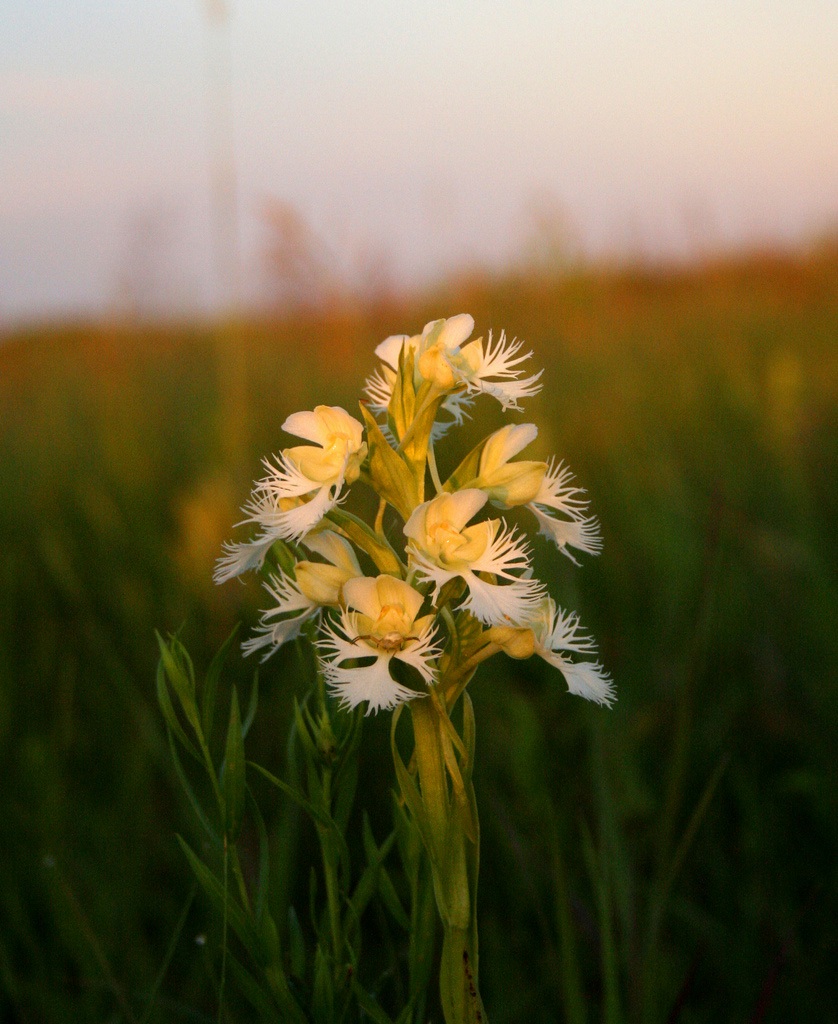
White pelicans
There’s so much more than just flowers to behold in nature in a Minnesota summer. Summer is also a good time to look for white pelicans. These striking birds, with wingspans that can stretch nine feet, are impressive when soaring in groups. Unlike the familiar brown pelican found along ocean coastlines, these birds don’t dive from the air to catch fish. Instead, they swim at the surface, hunting cooperatively in groups, dipping their large bills and pouches beneath the water to capture fish.

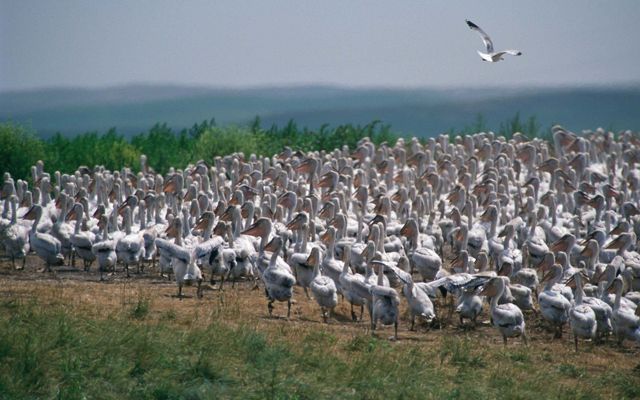
Cicadas
July and August bring the hottest days of the year in Minnesota. A hallmark of these “dog days of summer” is the whining call of cicadas, a rising crescendo heard often during the most sweltering moments of the afternoon. Cicadas are common wherever there are shade trees, living high in the branches where they’re not easily seen. But their call is hard to miss. It’s made by males to attract mates, and when many males call from one location, they create a loud, buzzing chorus.
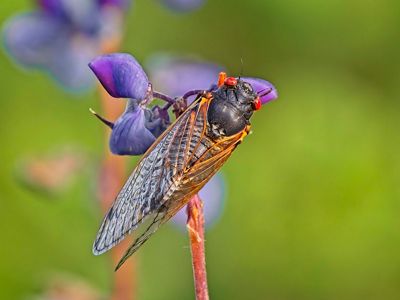
Cicadas lay their eggs in twigs that eventually break and fall to the ground. The young hatch and burrow underground, where they live—some species for years—feeding on the sap from plant roots. Their extended time spent underground culminating in broods and sudden, synchronized emergence has caused some people to confuse them with locusts, a different insect related to grasshoppers and known as an agricultural pest. Cicadas, however, are benign. Listen to their trill on a hot day and know that summer is here.
Places to Visit
-
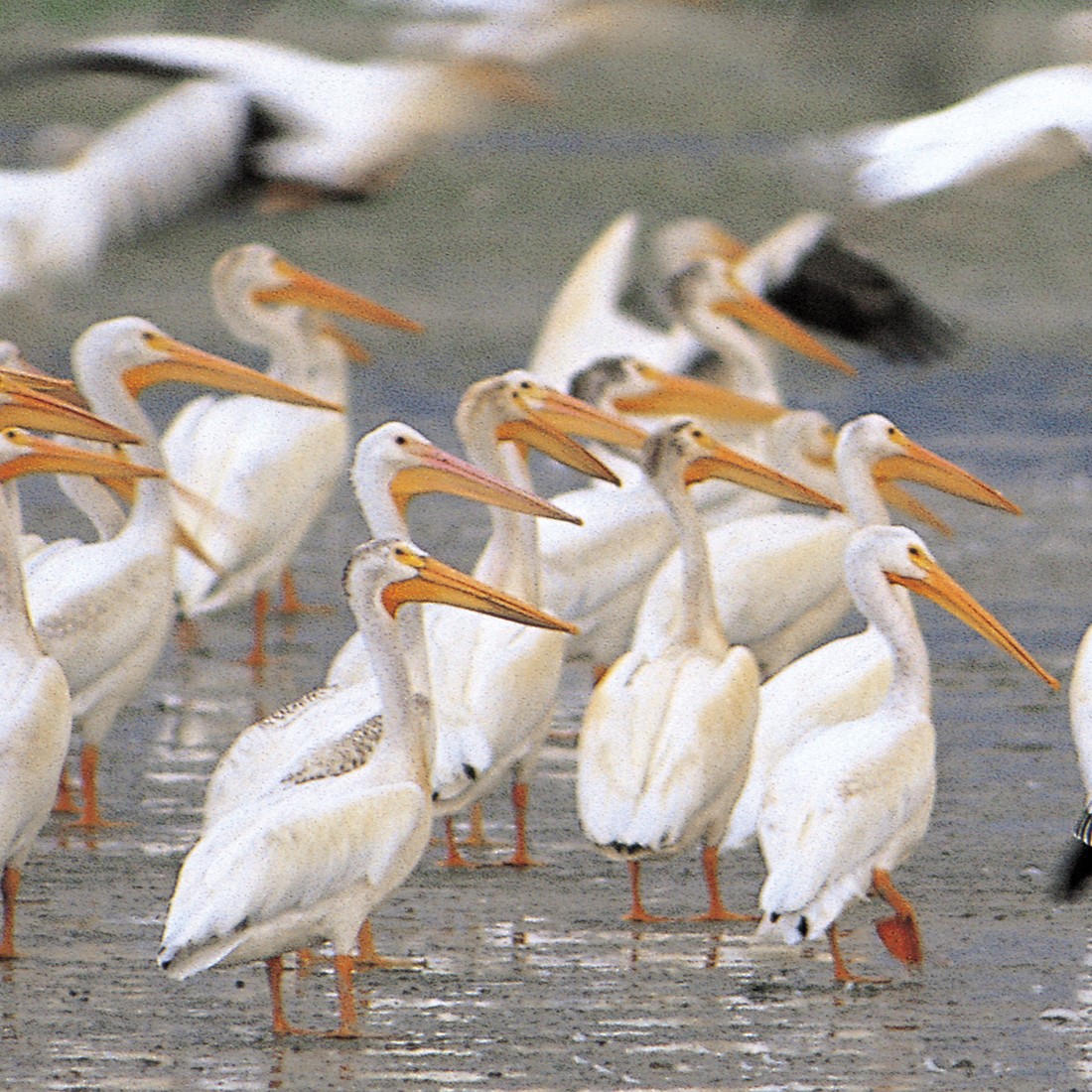
Lac Qui Parle Wildlife Management Area
The largest nesting colony of white pelicans in the country makes its home along the Minnesota River at this nature preserve near Appleton. Explore
-
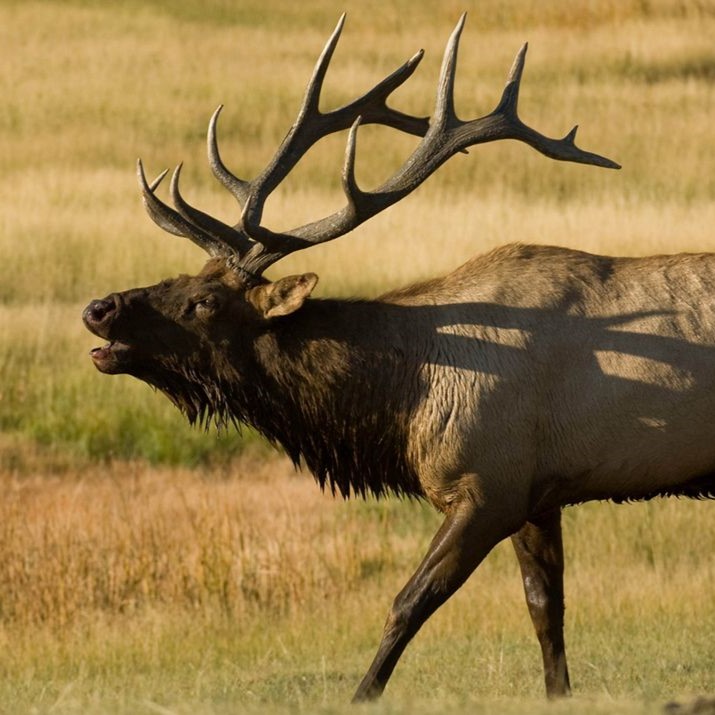
Wallace C. Dayton Conservation and Wildlife Area
This Nature Conservancy preserve is home to more than 30 rare plants, including the western prairie fringed orchid. It’s located near the Manitoba border in one of the most intact grassland systems in the Midwest. Explore.
-

Carver Park Reserve
This west metro park is a great spot to see birds, butterflies and wildflowers while hiking, biking or paddling. You can even visit the Lowry Nature Center to learn more about the natural features around you. Explore
Fall

Autumn is a season of change in Minnesota. Migrating birds flee to warmer climates. Bears and other hibernating critters prepare for a season hunkered down. And the most spectacular change of all—Minnesota’s tree canopy turning from its summertime green to a kaleidoscope of yellow, red, orange and brown. Don’t hesitate to get outside and enjoy nature’s signs of change—this season won’t last long.
Migration
Fall Color
Minnesota’s spectacular fall colors make it an autumn destination. Starting in late September, the Northwoods gradually shift in color, spreading southward throughout October.
Many of those colors have been present in leaves during the entire growing season but masked by chlorophyll, the light-absorbing green pigment that is essential for photosynthesis.
When the days shorten in the fall, photosynthesis slows and eventually ceases, causing deciduous trees to stop making chlorophyll, allowing other pigments in leaves to become visible. Carotenoids are the pigments responsible for yellows, oranges and browns; anthocyanins create reds and purples; and mixes of the two pigments result in bronzes and deeper shades of orange.

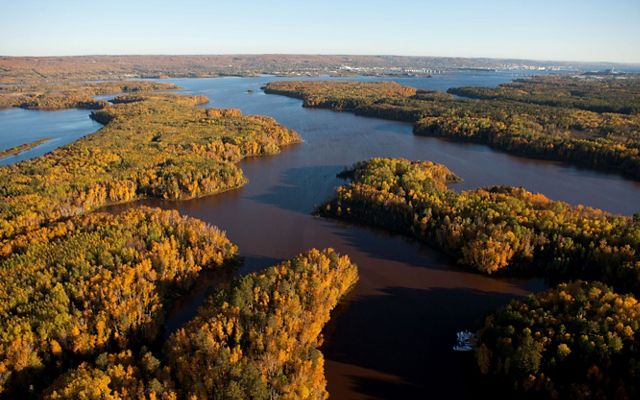
Location, weather and type of tree determine when this color change takes place. In the Twin Cities, peak fall color usually occurs in the first or second week of October. However, timing can change from year to year, influenced by temperature and rainfall. Drought causes less brilliant colors and trees in dry years drop their leaves earlier. At any one location, tree species also determine fall color. Ash are known for their early color change. Aspen, cottonwood and maple often follow, and oak change color later. Conifers, of course, don’t change color or drop their needles–except for tamarack (also called larch), the only conifer in Minnesota that changes color (from green to yellow) and drops its needles in the fall.
Stay tuned to the Minnesota Department of Natural Resources fall color finder to find the best times to observe fall color.
Hibernation Begins
Winter doesn’t officially begin until the solstice on December 21, but by November, cold temperatures have already induced many mammals that are not active during winter to begin hibernation. Black bears are the largest mammal in the state to undertake this extended period of dormancy and most bears are “asleep” in their dens by November.

Bears can wake up from hibernation if disturbed in their dens and female bears (sows) give birth to their cubs during January and February. Sow bears nurse and care for their newborns during hibernation.
Bears are extraordinary in that they recycle their metabolic waste during hibernation, using it to make new protein. They are the only mammals known to do this. It is this unique ability that allows them to go months without urinating, eating, drinking or defecating. Bears even redeposit calcium onto their bones during hibernation, compensating for the loss of bone mass that would otherwise result from months of inactivity.
Bears are sustained by their fat reserves during their many months of hibernation. When they emerge from their dens in the spring, bears may have lost 25% to 50% of their body weight. The need to build fat reserves to make it through winter causes bears to eat voraciously in the fall, a behavior called hyperphagia, when bears gorge themselves on berries, acorns and other foods. If these natural crops are in short supply, hungry bears may become nuisance bears when they wander near homes to raid bird feeders and trash cans or forage in farmers’ fields of corn and sunflowers.
Places to Visit
-
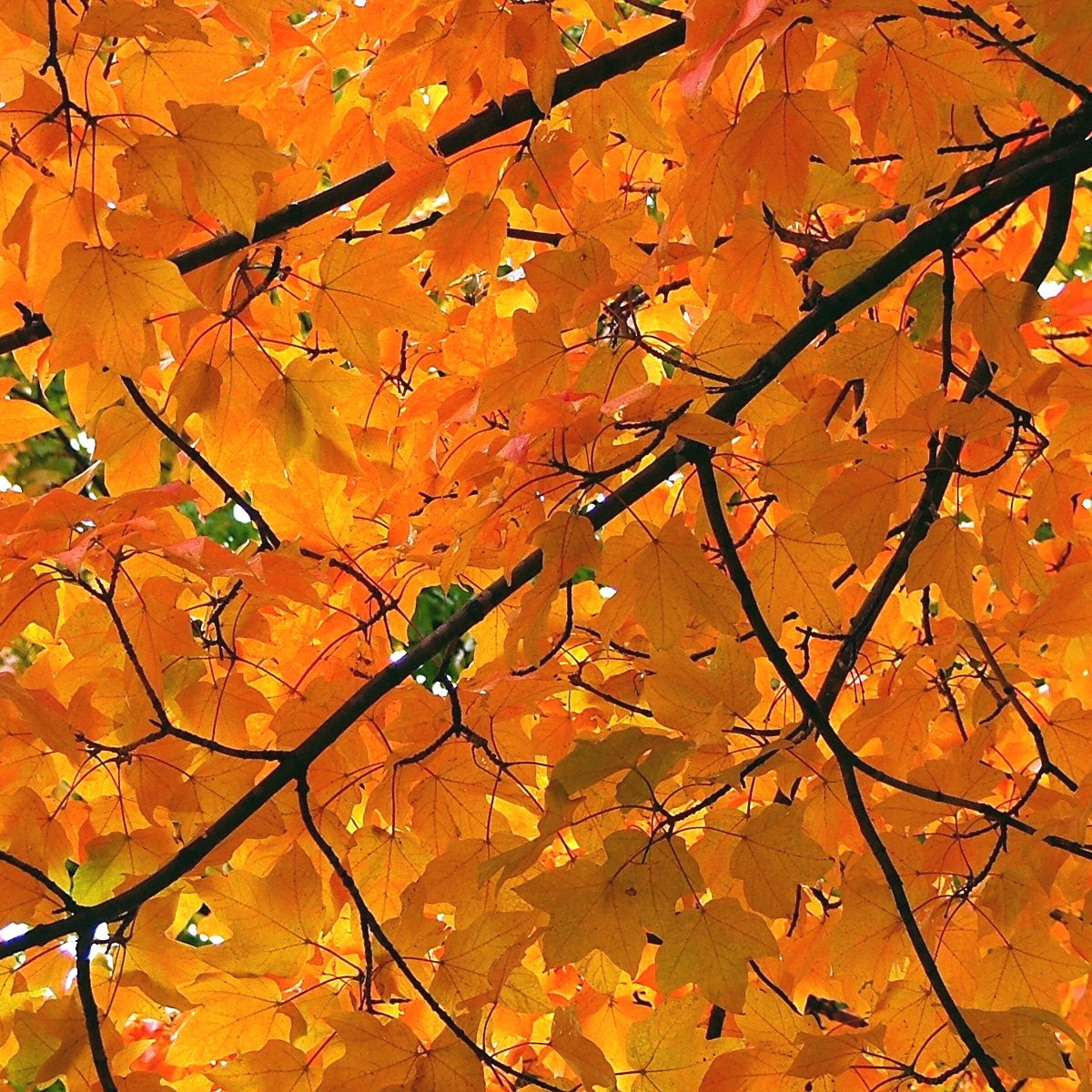
Oberg Mountain
One of the most iconic places for scenic fall color views is in Tofte on the North Shore of Lake Superior. A short loop hike brings fall color chasers hundreds of feet above the Superior shore for breathtaking views of the Northwoods in full color. Explore
-
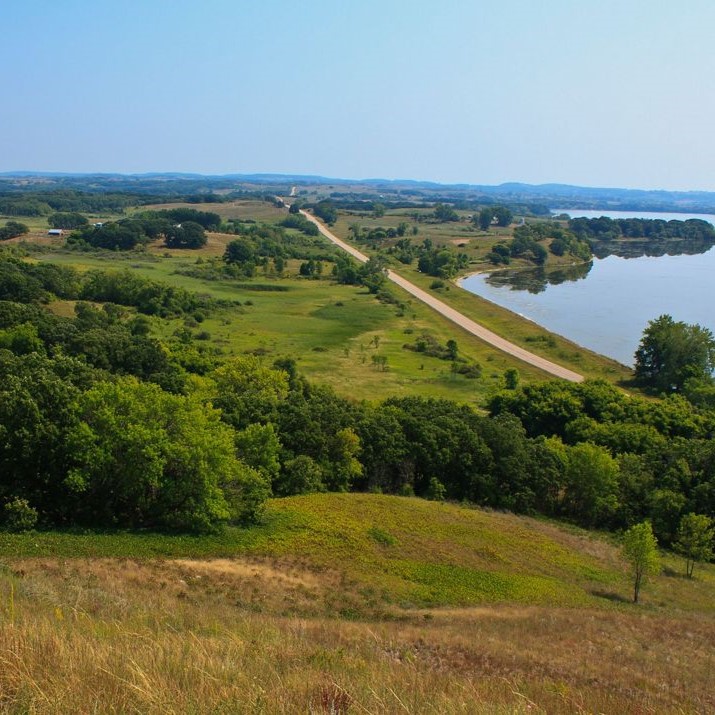
Seven Sisters Prairie
This TNC preserve attracts large numbers of waterfowl, like canvasback ducks, during the fall migration. Hike to the top of the prairie’s “mountain” for a panoramic view of the countryside and Lake Christina, where migrating birds stop to rest. Explore
-
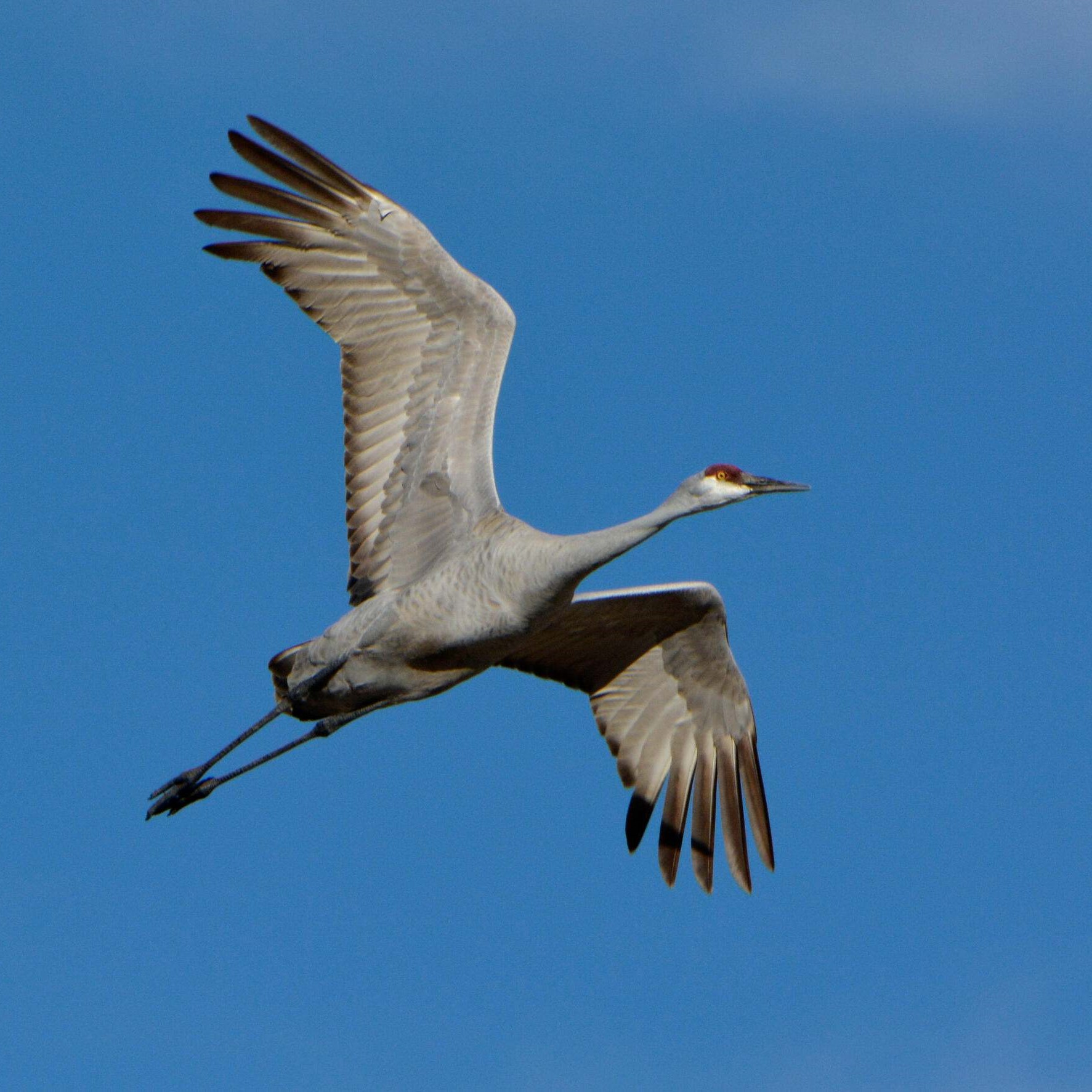
Sherburne National Wildlife Refuge
This 30,000-acre reserve southwest of Princeton is a great spot to see migrating birds in the fall, including sandhill cranes. Explore
